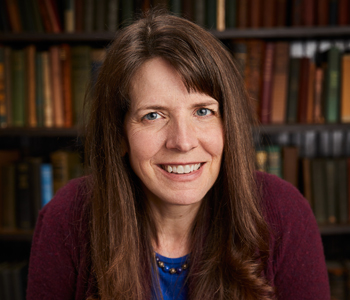Jennifer Scanlon
Bad Girls Go Everywhere: The Life of Helen Gurley Brown
Oxford University Press
288 pages, 61/8 x 91/4 inches
ISBN 978 0195342055
Bad Girls Go Everywhere, in addition to exploring the life experiences of a legendary magazine editor, makes a claim for Helen Gurley Brown’s inclusion in the pantheon of second wave feminists. This second element, the notion that Brown was a trailblazer for women, is what has made the book so controversial and has journalists and bloggers from Seattle to Ankara talking and quipping in tones celebratory or horrified. Many appreciate that Brown finally gets her due; others see her as woman on the take rather than a feminist; others simply find her too individualistic, or too over-the-top with her sexual advice or her embrace of beauty culture. Because she advocated working the system rather than overthrowing it, I argue, she was no less a feminist hero to her legion of followers.
Helen Gurley Brown is best known for two things: the 1962 publication of Sex and the Single Girl, her primer for women who wanted men, money, and sex; and her 32-year editorship of Cosmopolitan magazine. I argue that she ought also to be known also as a pioneering second-wave feminist. For one thing, the bestseller book that catapulted Brown to international fame preceded Betty Friedan’s The Feminine Mystique by a year. For another, Brown deliberately targeted a different audience than did her more well-known feminist peers. Rather than liberate middle-class housewives from the confines of domesticity, or young college women from the strictures they faced in social movements of the day, Helen Gurley Brown sought to liberate young, working-class, urban, sexy, single women from the postwar dictates of early marriage, sexual repression, and life devoted to home and family.

Helen Gurley Brown sought to liberate young, working-class, urban, sexy, single women from the postwar dictates of early marriage, sexual repression, and life devoted to home and family.
Bad Girls Go Everywhere is a biography and a cultural history. It charts a woman’s life through several significant eras in American history: the deprivations of the Great Depression, the restrictive mandates of the “long decade” of the 1950s, and the social upheaval of the 1960s and later. Brown was born in 1922 in the Ozarks and grew up in Little Rock and Los Angeles. Her father’s death in an elevator accident when she was ten years old meant that she and her mother and sister faced the worst of the Depression with few prospects. When at nineteen Helen’s sister Mary contracted polio, the teenage Helen assumed significant responsibility in her family. Like many of her peers, she entered the secretarial world after high school. She held seventeen different secretarial jobs, leaving one for the next anytime she could earn a bit more money. In the meantime, she lived an active single life, dating widely and engaging in sexual relationships with unmarried and married men, but firmly holding on to the notion that paid work, rather than men, was her ultimate source of support.
Brown documented the conflicts she had with postwar notions of marriage and respectability in Sex and the Single Girl, which offered advice not just about sex but also about money—and the single girl’s need to earn it, save it, and safeguard it. She would continue to argue that men were great additions to women’s lives but that women had to make it on their own, right on through her editorship of Cosmopolitan. At the same time, she argued that it was perfectly fine for women both to initiate sex and to surrender to it; that it was perfectly fine to be both a sexual actor and an object of someone else’s sexual desire.
The book also explores, in concrete ways, what feminist theorists talk about as the performance of gender. Many second-wave feminists counseled women to avoid the trappings of femininity. Short skirts and make-up, they argued, made women subservient to men and prevented them from moving towards full equality. Helen Gurley Brown, on the other hand, recognized that her audience of secretaries and receptionists and flight attendants hardly had the freedom to forgo makeup, dresses, or shaved legs. On top of that, she realized that many of them enjoyed those performances, which she viewed primarily as giving women, rather than men, pleasure. In short, she rejected the victim philosophy of the second wave and instead promoted what some have referred to disparagingly as “deep cleavage feminism.” Huge numbers of women responded to Brown’s approach, seeing the performance of femininity as empowering rather than debilitating and wanting, as I argue, a role model rather than a movement.
Bad Girls Go Everywhere brings together several strands of my scholarly research: the histories of consumer culture, women’s magazines, and feminism. In my first book, Inarticulate Longings: The Ladies’ Home Journal, Gender, and the Promises of Consumer Culture, I explored the ways in which the advertising and magazine industries developed together in the early twentieth century, creating a construct of the American woman as white, middle-class, happy in her domestic world, and above all, perhaps, interested in shopping. In order to promote this construct, however, these industries also had to acknowledge women’s “inarticulate longings” for sensuality, economic independence, and self-worth. We can read women’s magazines and advertising against the grain, I demonstrate, to see both the messages women received and the longings they felt.
In other work I have explored women’s relationships to chick lit fiction, their creation of online communities, and their relationships with each other in the space created by beauty salons. My intellectual interests lead me to wonder how, in a variety of venues, women negotiate media messages. My resistance to seeing women purely as dupes of advertisers or magazines provided a clear link from my earlier work to Helen Gurley Brown and her life and life’s work.
Rorotoko’s readers may find Helen Gurley Brown’s attempts to “queer up” her publications interesting. As time went on, Brown learned that equating sex with heterosexuality sold magazines and paid her salary, but her own inclination around treating sexual issues was far more progressive. In both Sex and the Single Girl and its sequel, Sex and the Office, Brown attempted to include information about homosexuality, which she considered a key element of office life. Her desire to address how women really lived and not “merely the ways arbiters of society would have them live” mandated, in her mind, attention to gay and lesbian life.
In her nearly-final draft of Sex and the Office, for example, Brown included a lesbian seduction tale which, after a great deal of back and forth, her editor/publisher excised. Brown repeatedly expressed her frustration with his decision, feeling that what she portrayed was, simply, grown-up sexual behavior. Later, in her attempt to take over the then-ailing Cosmopolitan, Brown returned to lesbian life. In her mock-up of what the magazine would look like under her direction, she included a proposed article titled “I Love Girls Like You Love Men” and another she hoped to commission from Albert Ellis about how a woman could tell if she were dating a gay man—and what to do about it.
Over the years at Cosmo, Brown had run-ins with Hearst executives who worried that her pieces, whether they covered heterosexual life or, occasionally, lesbian life, were too “gamey.” Brown operated in the world of mass media, responding most often brilliantly to its demands and restrictions. Nevertheless, had she had free reign, we might well have had a different magazine, one that truly celebrated women’s multiple sexualities.

Brown learned that equating sex with heterosexuality sold magazines and paid her salary, but her own inclination around treating sexual issues was far more progressive.
My attempt is to open up discussions of feminist history, to broaden our analysis of the second wave of feminism. Bad Girls Go Everywhere makes a case that the girly girls, or in this case “Gurley girls,” of this era form a little-studied but significant group of feminists. More radical feminists may have winced at the “please your man” elements of Brown’s message, but her fans found inspiration in her brand of liberation. Bad Girls includes the voices of many of those fans, who saw Brown as the loyal sister and friend who cheered them regardless of the ways in which their lives met anyone else’s standards. Ultimately, then, the book helps us understand and appreciate what we might call the feminist mainstream.
The book also makes the case that Helen Gurley Brown provides one of the most important links between the second and the third waves of feminism. Many in the third wave, “lipstick,” Sex and the City feminist movement see themselves reacting to second wave positions on sexuality, power, and culture. Some in the third wave focus on prioritizing sexual pleasure over sexual danger. Others enjoy the varied performances of gender, including femininity and masculinity, available to them in contemporary culture. Still others reclaim “girl” as they attempt to make feminism more fun if not more youthful. Many write about and even celebrate the enormous contradictions they experience in their attempts to live a feminist life. More than second wave feminists, they argue, they accept living in mainstream worlds, acknowledge and understand the diversity of women’s lives, tolerate and even enjoy heterosexuality, refuse to be considered victims, celebrate individualism, and revel in popular culture. Not all third wave feminists identify with each of these ideals, but one thing is certain: for each of these positions, Helen Gurley Brown is one of the most, if not the most, striking of the third wave’s second wave antecedents.




We don't put paywalls. We don't distract you with ads. We don't sell your data.
Please help to keep this running!